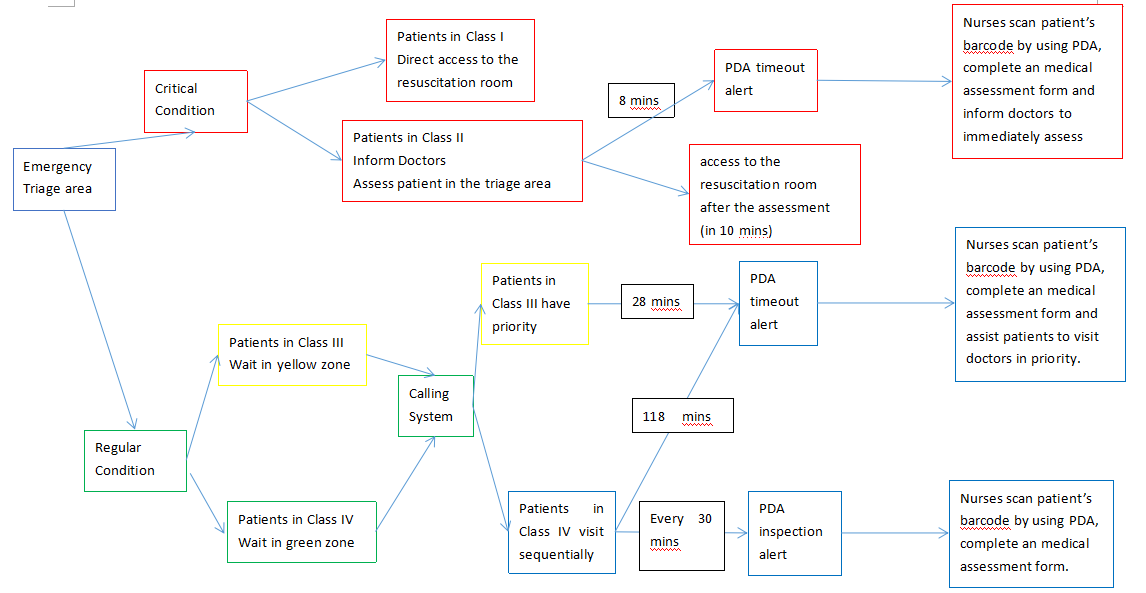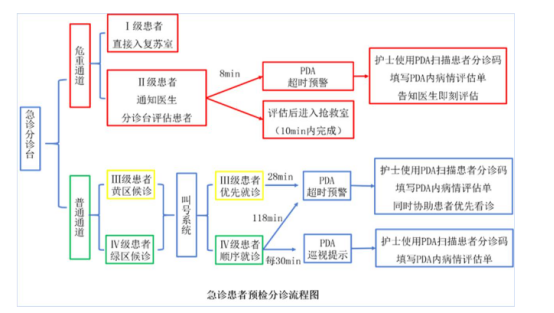Emergency Care
Emergency Care
1. Patients enter the emergency triage area, critical patients (transferred from emergency vehicles, impaired consciousness, active hemorrhage, respiratory distress, severe pain, etc.), green channel patients from five major centers (chest pain, ischemic stroke, multiple injuries, critical maternal, critical neonatal) come in → enter the critical channel → triage nurses measure vital signs, assess patients, perform graded triage and make handover with emergency vehicle personnel → According to the classification of the condition, the patient is directed to the corresponding area for treatment.
2. When ordinary patients come to the hospital, the triage nurse asks patients about their conditions, assesses their vital signs and accompanying symptoms, conducts condition-grading triage → prints the triage barcode and instructs patients to register and wait for treatment in the corresponding area.
3. When the patient's body temperature is ≥37.3℃ or comes from a medium-high risk area or a key concern area with 11 types of symptoms related to Covid-19, nurses give the patient a mask and instruct them to see the fever clinic.
4. When the patient is from a medium-high risk area or a priority area of concern but without symptoms related to Covid-19, the patient is given a mask and instructed to see the emergency cabin.
5. The triage nurse instructs patients to wait for consultation in the designated area according to the classification of their condition.
6. During the patient's waiting process, the suture nurse makes a dynamic inspection to observe the patient and to save the patient in exceptional cases .
7. The doctor receives the patient, gives laboratory tests and examinations, and prescribes→pays→examinations→further treatments.


![]()

![]()




